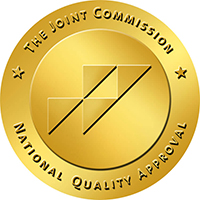“You’ll be safe in my tummy, do not be afraid.”
I would say this to each and every bite of food that I took. I was 5 years old. Eating meals was stressful. I believed my food was scared and I didn’t want to cause it harm, so I needed to reassure each bite that it would be safe inside my tummy. Out of embarrassment or annoyance or maybe a little bit of both, my dad would tell me to “stop saying that,” especially when we were in public. So I started to whisper it. He didn’t understand, but I believed if I didn’t say those exact words to my food something bad was going to happen.
Food wasn’t the only inanimate thing that I empathized with. I couldn’t bear the thought of trash being thrown away. I cried thinking that trash knew it was unwanted by everyone. I collected trash everywhere I went. I even collected trash at lunch and on the playground while other children were enjoying their recess. I would bring home trash and call it my treasure and my mom would save it for me in large trash bags in the garage. She didn’t understand, but I believed that if she ever threw away that trash something bad was going to happen.
One day I was in the grocery store, shopping with my dad. I saw a tissue on the ground and I picked it up to take it home to save it. Horrified, my dad took me home, sat me down, and explained to me why it’s not ok for me to pick up used tissues off the ground. That was the day I learned about germs– a day that would change my life forever.
I became terrified of germs. Everything was dirty and going to make me sick. I believed that germs were all over my hands, and no matter how many times I washed them, they would never be clean enough to eat with. This became a challenge when eating any type of finger food. I could not eat anything that I had touched so I would eat right up to the part where I was holding the food and I would leave that part on my plate to be thrown away. At the end of a meal I would have a plate full of a hundred little half bitten pieces left all over the plate.
This particular fear became so strong that I didn’t want to eat at all. In fact, I didn’t even want to swallow my own saliva in fear that it was contaminated somehow. One thought that a germ somehow got in my mouth would send me into a panic and I would have to spit. When I wasn’t in a place where I could spit right away I would wait and let the saliva pool in my mouth until I couldn’t hold it anymore, go to the nearest restroom, and spit it out, only to have it immediately start to pool again. People thought I was strange. They didn’t understand, but I believed there were always germs in my mouth and if I didn’t spit them out something bad was going to happen– in this case, I would get sick and/or die.
No one understood why I acted this way and they chalked it up to me being a quirky kid. More importantly, I didn’t understand why I acted this way either, but I knew I had scary thoughts and I needed to do something in those moments to make them go away.
I was a child with undiagnosed Obsessive Compulsive Disorder.
What does Obsessive Compulsive Disorder look like?
Adults can recognize when they have intrusive and obsessive thoughts and compulsive behaviors and seek help. However, children are usually unable to identify these patterns within themselves and do not know to ask for help. This is why it is imperative that parents, teachers, and caregivers learn to recognize the signs and symptoms of a child with OCD.
OCD has two components: obsessions and compulsions. Obsessions are recurring and typically unwanted thoughts that interrupt a person’s healthy thought pattern. They are often irrational, unrealistic, and scary.
Compulsions are the behaviors in which a person engages to relieve the anxiety associated with the obsessive thought. Irrational catastrophic fears are tied to these compulsions. Meaning, if that person doesn’t act on the compulsion, a tragedy of some sort may occur. For example, a child might need to hug their parent a certain number of times until it “feels right” to reassure them that nothing bad is going to happen to them that day when they leave.
Recognizing the Signs and Symptoms
Some symptoms of Obsessive Compulsive Disorder in children include:
- Fear of dirt, germs, things being “contaminated”
- Extreme discomfort when things are not arranged or organized a specific way
- Hyperfixation on involuntary body functions like blinking, swallowing, or breathing
- Fear of doing something wrong/immoral like lying or hurting someone
- Excessive worry about either themselves or someone else getting sick or dying
Common compulsions in children include:
- Excessive self-cleansing like hand washing, bathing, brushing teeth
- Rearranging/organizing a certain way and/or counting/touching things a certain number of times until it feels “just right”
- Asking for constant reassurance from parents/trusted adults
- Performing rituals surrounding daily tasks like morning, bedtime, or meal routines
- Checking things repeatedly like door handles and light switches
- Rewriting, rereading, or redoing homework assignments more than once
What can you do?
Before you can explore the different types of therapy for children with OCD, the most important first step is connecting with your child and letting them know that they are not alone. Kids are often ashamed and embarrassed of both their thoughts and their behaviors and they need to know that they are loved. Do not make them feel bad about what they do. For a child with OCD, simple tasks can be very difficult and take longer for them to complete. It’s easy for people who don’t understand to get frustrated with them. Remember your child is trying to maintain some sense of control amidst the perpetual state of chaos in their mind. A big part of OCD is feeling unsafe. Judging or criticizing them can be detrimental to their ability/willingness to open up, and stigma will drive them to isolate and feel even less safe. Creating safety is imperative.
We know that OCD behaviors are driven by anxiety. While Exposure Response Prevention can be a successful treatment for OCD, oftentimes a person is experiencing so much anxiety from intrusive thoughts that exposures are too difficult to introduce. Establishing trust with a provider and finding ways to reduce some of the anxiety first, through Cognitive Behavioral Therapy and coping skills, may be the first step to your child’s journey of managing their disorder. This will inevitably be a life-long healing process, and creating a safe space– with safe people– is a key factor in their success.
There’s hope
Your child is not defined by their diagnosis, and that’s the beauty of integrative care– it treats the whole person, not just their symptoms. We are complex beings who are capable of learning about ourselves and growing through challenges, together. When mental health concerns are addressed early and properly, your child can struggle less and enjoy life much more.
If you'd like to learn more about how Solstice Pacific may assist you, please contact us via our website or by phone at (949) 200-7929. To help us get to know you better, you may also take this brief assessment and verify your insurance.







